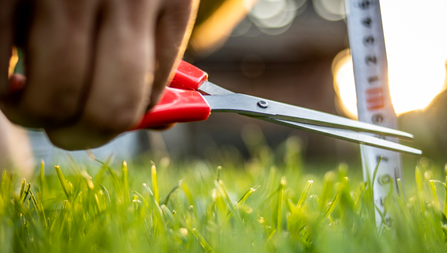|
According to Donna Farhi, “Countertransference refers to the way a student, client or patient may evoke repressed feelings on the part of the teacher, therapist or doctor”. By being aware of the countertransference, it enables the yoga therapist to create and maintain better boundaries as well as develop tools to contain feelings so not to destabilize the client-therapist relationship. Trust me-this is easier said than done. I am always working on this aspect of the client/therapist relationship. I openly admit, I struggle with perfectionism making the most prominent feeling a client can evoke in me--accountability. In my professional and personal life, I am always prepared and hold myself to a high standard especially if I commit to do something for another person. I equate this trait to respect for and towards others. So, when a client lacks what I would call accountability or respect, it makes me soooo angry. I’m also greatly disappointed in and saddened by someone I thought was reliable and trustworthy as if I really know that client on a personal level. I have to remind myself-I’m the yoga therapist and I don’t know anything more about the client than what he/she/they tell me. The client/therapist relationship is not personal. So, I endeavor to remain professional at all times and try diligently not put my moral/value/ethical system on others or cling to expectations of others that I have no control over. Like I said…easier said than done!! You don’t have to be a yoga therapist to know how hard this is—we experience this same clinging to expectations in everyday life. Do you hold on a little too tightly to certain aspects of yourself, your life or others? Is it possible to let go of expectations? How Do I Work on Letting Go Expectations? I go back to the Yoga Sutras and, in particular, the last Yama …Aparigraha (non-attachment). This enables me to let go of my expectations of others since it only creates suffering for me. Here’s are some ways to cultivate Aparigraha:
What tools can you put in place to steady yourself when attachment and clinging raise their ugly head? Farhi, D. (2006). Teaching Yoga: Exploring the Teacher-Student Relationship. Rodmell Press.
0 Comments
Swami Satchidananda was once asked by a student, “There are times when I feel very deep loneliness that no friend, family member or lover can seem to satisfy. Do you ever get lonely like that?” Satchidananda replied, “If you depend on anything or anybody outside you to be a companion, it is impossible to have that companion always with you. Even if another person wants to be with you always, he or she cannot. We come alone, and we go alone. Don’t depend on outside company. Even as you are coming and going, there is always another there—your own spirit, your own Self or the God within you.” When we rely on things, people, or experiences outside of ourselves to make us happy, we are seting ourselves up for failure. True equanimity comes from being independent of the comings and goings of the outside world. The minute we cling to something or someone we create little mind fluctuations that cause suffering. The key to gaining control over those fluctuations is to understand what lies underneath those thoughts. Our thoughts may be pure, positive, and virtuous, and move us toward enlightenment. Or, as is the case for most of us mere mortals, our thoughts can impede our path toward enlightenment by creating a mental field of suffering caused by the Kleshas (obstacles or afflictions of the mind). So What Are The Kleshas? The five Kleshas are:
Some of the Kleshas afflict us on a daily basis at a subtle level and others can be overwhelming and cause great suffering. The Kleshas stop us from fully enjoying life, from being truly present in the now, and from having a sense of freedom. Unlike pain—an uncomfortable physical, mental, or emotional experience—suffering is the state of being caught up in your situation and identifying with it as an aspect of your being. Therefore, pain is inevitable, but suffering is optional. All of human suffering can be attributed to one of the five Kleshas. All causes of suffering are contained within the first Klesha (Avidya). When you remember your true identity as pure spirit (and not as the physical body):
How Do We Overcome the Kleshas? This is where meditation comes in. In meditation, the mind can be fixed on one thought. That concentration on one thought or one point literally transforms the mind by allowing it to flow undisturbed from thought to thought. Once the mechanism that produces the detrimental, harmful or damaging activities of the mind is eliminated, your thoughts are no longer afflicted. The underlying obstacles, the Kleshas, are removed and we realize our true nature. To transcend the first Klesha and, thus, the remaining four, the Yoga Sutras give this guidance. Sutra 2.10 states, “In their subtle form, these obstacles can be destroyed by resolving them back into their original cause.” This means if we eradicate the first Klesha (Avidya) we can become self-realized/liberated. Through yoga the Kleshas become less and less active until they reach the subtle form. However, remember even the subtle form can be triggered back to the active state-think about all the fallen gurus in recent memory whose Kleshas came back roaring. Sutra 2.11 states, “In the active state, they can be destroyed by meditation.” Think of it this way-Sutra 2.10 is for the already “advanced” meditating yogi and Sutra 2.11 is for the rest of us-the yogis that are embarking on the path to liberation. Meditation is moving away from a life of suffering and is the key that unlocks this prison by returning you to the state of knowledge of who you are. Everything in the physical world is impermanent and ever changing. Friends are not permanent. Our physical body isn’t permanent. A job isn’t permanent. Money isn’t permanent…and the list goes on. What is permanent…your True Self.
Swami Satchidananda. The Golden Present. 1987. Integral Yoga Publications. As many of you know, I’m a big Yama-s and Niyama-s fan. They totally ROCK!! I personally think that if more people practiced them, the world would be a better place for it. So here is my brief take on them. Once upon a time, in land far away Patanjali wrote the Yoga Sutras. They are 196 aphorisms or “threads” that form the foundation of Raja Yoga. According to the Yoga Sutras, the end goal of yoga is the liberation from all worldly suffering, habitual conditionings and the cycle of birth and death. Liberation occurs by removing the clouds of spiritual ignorance by cultivating practices that bring contentment and non-attachment. Through this process, the individual comes to know the pure consciousness of his/her/their being. It’s in the second book of the Yoga Sutras (Sadhana Pada) that Patanjali lays out all the details on how to actually do this whole attaining Liberation thing. It’s called YOGA and there are two forms.
It’s Ashtanga Yoga that most of us mere mortals practice. Since most of us can’t jump right into Kriya Yoga, Ashtanga Yoga is the step-by-step method. Think of Kriya Yoga as a marathon and Ashtanga Yoga as one of the those “Learn to Run” apps. Baby steps!! The first two limbs of Ashtanga are the Yama-s and Niyama-s. So, what is a Yama? These are the codes of conduct or moral restraint. They are the attitudes towards your environment. They are oriented toward public behavior and allow us to exist harmoniously with others. They are the principles outlining how you treat others and the world around you…and there are 5 of these principles. They are: A. Ahimsa (non-harming). To apply Ahimsa to daily life is to practice non-harming of any creature in feelings, thoughts, words or deeds/actions. According to T.K.V. Desikachar, Ahimsa is “consideration for all living things, especially those who are innocent, in difficulty, or worse off than we are”. B. Satya (Truthfulness). You can demonstrate Satya through right communication-telling no lies and be truthful in your feelings, thoughts, words and deeds. C. Asteya (Non-stealing). You should not covet what others possess. Most of us perceive the universe as lacking abundance, which causes desire for things that are not ours. D. Brahmacharya (Continence). We can apply Brahmacharya by having moderation in all actions. Through moderation, you can live your life’s purpose instead of endlessly pursuing fleeting pleasures. E. Aparigraha (Non-accumulation). Aparigraha is the ability to accept only what is appropriate. It is freedom from “collecting” rooted in jealousy of others. And that leads us to the Niyama-s…and there are 5 of them as well. These are the internal commitments, responsibilities and disciplines we make to ourselves. The Niyama-s outline how we treat ourselves. A. Saucha (Cleaniness). To apply Saucha, you must practice the five yama-s which clear away negative physical and mental states of being and protect the purity and sanctity of the energy around you. B. Santosha (Contentment). You can cultivate Santosha by finding happiness with what you have and who you are, seeking happiness in the moment, taking responsibility for where you are and choose to grow from there. C. Tapas (Self-Discipline). Tapas is the removal of impurities that allows your body to function more efficiently. D. Svadhyaya (Study). Education changes your outlook on life and facilities healthy thoughts that enable you to understand your weaknesses and strengths. E. Ishvarapranidhana (Surrender to cosmic intelligence). Ishvarapranidhana is manifesting a desire to be less self-centered by aiming at higher goals. So how do I apply these to my life? Professionally as a yoga therapist, the Yama-s and Niyama-s play a central role in my scope of practice. I frame all my yoga therapy sessions with compassion for my client because everything else flows from the first one on the list-Ahimsa. I also often have discussions with clients on how to incorporate the Yama-s and Niyama-s into their daily lives in order to help achieve their goals. For example, I may ask a client to journal on how to find and maintain the balance of effort (Tapas) and contentment (Santosha). We’ve all been here-you try to force things (not content with the progress) and end up doing harm (causing an injury or pain). How do you cultivate the Yama-s and Niyama-s is your personal and professional life? Desikachar, T.K.V. (1995). The Heart of Yoga: Developing a Personal Practice. Inner Traditions International: Vermont. Sri Swami Satchidananda. (2012). The Yoga Sutras of Patanjali. Integral Yoga Publications: Buckingham, VA. Swami Karunananada. (2016). Swami Satchidananda-Yogaville Ashram Raja Teacher Training Manual [Lecture Notes and manual]. |
Kelley GallopI AM Boundless Bliss Yoga. Just me. I'm a one-lady band. I'm a yoga therapist. I didn't start out to be a yoga therapist, I just wanted to learn more and SHAAAZZAMM...here I am. Archives
September 2021
Categories
All
|










 RSS Feed
RSS Feed